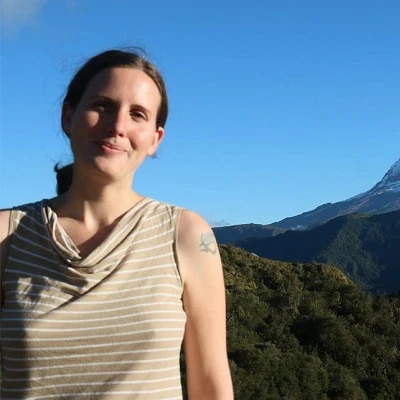
The well-known destinations for German Jewish refugees during the Holocaust were the United States, England, Switzerland, or other neighboring countries that seemed safe before the war began. However, it was actually difficult to get a visa for the US, and with the beginning of the war it became even harder and Europe was no longer safe. This is why “exotic” countries like Ecuador became a destination for “late” Jewish refugees, who were desperate to leave Europe and escape the genocide especially after the pogrom of November 1938. In spring of 1936, there were only about 150 Jewish Germans living in Ecuador. Migration reached its peak in 1939, and by 1943 between 3,500 and 4,000 refugees had reached Ecuador.
“We didn’t want to come to Ecuador. We got here by chance, there was no other country that wanted to accept us. Besides Bolivia and Shanghai.” This is the story of many migrants. Most went from embassy to embassy, begging consuls for visa, slipping them bribes and gifts, hoping to leave Europe soon, going anywhere far away from danger.
While most people had never heard of Ecuador before and had no idea what they were getting into, it is no coincidence that many did end up with a visa for Ecuador: early migrants like Julius Rosenstock supported the visa application processes and helped from Quito to obtain visas through the European embassies, first for their own family and friends. Later, the Jewish charity HICEM was formed and was formally accepted by the Ecuadorian government as a negotiation partner.
The difficult journey to Ecuador
Once passage and visa were obtained (quite difficult, because passage was needed for the visa and vice versa), the long voyage could begin. Before the beginning of the war, it took between three and five weeks to reach Ecuador. After the war began, it was impossible for some to leave, others, thinking themselves already safe, had to come back. The ships that did travel did so in convoy and blacked out, because of the danger from submarines and air strikes.
Most people reached Ecuador in Salinas on the coast. Guayaquil’s harbor, Ecuador’s largest today, was not yet built. Few also came via Colombia and entered the country in Tulcan on the northern border. Salinas was a small fishing village and offered only the most basic accommodation and eateries and offered the first culture shock, as one immigrant described later, remembering his arrival: “We arrived ashore happily without our suitcases falling in the water. It took until 2 am at customs. Our first contacts with Ecuadorians were very pleasant and friendly. Except for the fact that they rifled through our suitcases… Well then we sat somewhat sad and uneasy in a café in Salinas, not far from the beach and the customs building. It was incredibly dirty and ugly. There were flies swimming around in the coffee.”
After Salinas, the next stop was Guayaquil, which could be reached by railbus. From Guayaquil, many families traveled on to Quito, hoping that “the climate in the capital high in the mountains would be more like the one that matches the one we have been used to all our lives.” Until 1938, the trip by train took two days, with one night spent in Riobamba. After that, the direct train took 12 hours to reach the capital. The train ride was an unforgettable experience, traveling from the tropical flatlands of the coast to the high Andes with their snow-capped volcanoes. As one immigrant put it: “Beauty was the one thing I was certain I would not miss here.”
Quito with its colonial buildings and Spanish influences offered indeed some familiarities for the Europeans who arrived. But many had lived in big cities before and found Quito to be a small town. Also many things were completely different and took a lot of time getting used to. Among those were the unpunctuality of the people, public buses that were filled to the maximum with people, but also the society that was deeply divided by class and race.
Jewish businesses in Quito
Once settled in Quito, the Jews had to find a way to make a living. Many actually started small hostels or restaurants, others produced clothes, opened bakeries, dry cleaners, factories, or sold delicatessen that had not been available in Ecuador. Some of these companies exist until today. For example a small appliances store has turned into one of the largest chains of hardware stores (Kywi), the Hotel Colon was for a long time one of the biggest in Ecuador, and Olga Fisch’s store of folkloric art exists until today.
While some of the exiles settled in Ecuador, forming cultural and religious organizations, others left the country as soon as they could. Some finally got a visa for the United States, others left for Israel after the country’s foundation.
If you look closely, you can find traces of the Jewish exile until today. The website Jews of Ecuador offers a great collection of memorabilia and history.
Information and Quotes from: Kreuter, Marie-Luise (1995): Wo liegt Ecuador? Exil in einem unbekannten Land. 1938 bis zum Ende der fünfziger Jahre. Berlin: Metropol.







